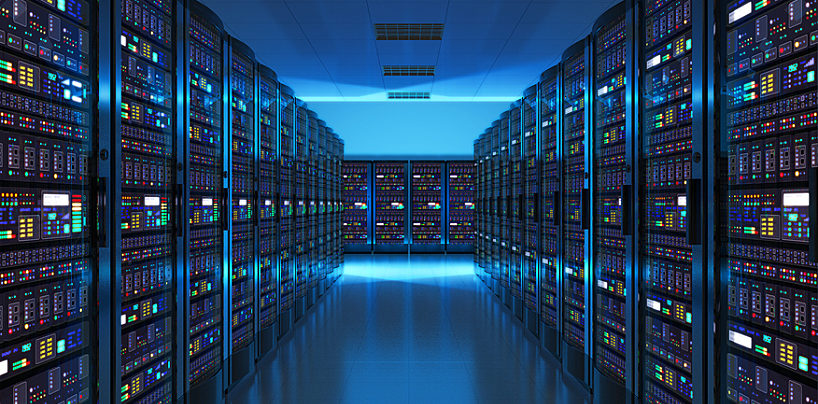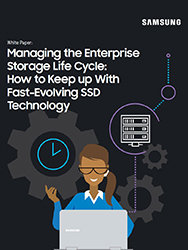Storage administrators and systems architects are always looking for more storage, hoping to delay expanding their data centers and power systems. Thus, HHD and SSD sizes have continued to shrink over time, from 12-inch hard drives, through 8 in., 5.25 inch, 3.5 inch and 2.5 inch hard drives, to 2.5 inch SSDs and M.2 SSDs.
The M.2 format is the latest in a long line of ever-smaller HDDs and SSDs. It is about an eighth of the volume for a 2.5 in. drive, with smaller power and cooling requirements. A rack mount system that can accommodate 25 2.5 in. SSDs, could theoretically store hundreds of M.2 drives.
Another goal has been to reduce power consumption and heat production at the same time — today’s M.2 SSDs such as the Samsung NVMe SSD 960 PRO (which is designed for client PC applications) use around 5 watts peak and as little as 40 milliwatts at idle and 5 milliwatts in sleep mode. This compares to 9 watts peak and 5 watts idle for modern HDD, and more for older ones.
Increasing Benefits With M.2
These trends not only enable storage systems with petabytes per rack, but allow for 1u servers and blade servers with terabytes of capacity in very small spaces. When squeezing four servers into a 2u chassis, or 14 into a 7u chassis, high-density storage is paramount. Server blades that could accommodate one 2.5 inch HDD or SSD can house two M.2 SSDs, not only allowing for greater capacity, but also potentially redundancy through drive mirroring.
Since power usage drops with the M.2 format, and cooling is enhanced over 2.5 in. drives with the caseless M.2 design, the overall cooling requirements for blade servers is generally less than with 2.5 in. drives.
Manage the Enterprise Storage Life Cycle
Download this guide to improve your storage planning and evaluation processes. Download Now
M.2 SSDs for servers and enterprise storage can not only enable high-density storage, they can improve performance as well. Applications such as server virtualization, virtual desktop infrastructure (VDI), big data and online transaction processing (OLTP) need as many input/output operations per second (IOps) as they can get.
With HDDs, the practice is to use lots of relatively low-capacity HDDs, since the number of IOps that can be achieved with each drive is relatively small. SSDs, and particularly NVMe SSDs like the Samsung PM963, can achieve five to 10 times as many IOps as older SSDs and many more times than the best HDDs, allowing one or two NVMe SSDs to replace a dozen or more HDDs.
The latest V-NAND SSDs can also reduce costs, by replacing single-layer SSDs with versions stacking 16, 32 or more layers. With 64-layer and even 96-layer technology becoming available, the cost per terabyte of capacity is dropping rapidly, making it a more feasible investment.
With the introduction of the M.2 form factor, IT admins can now squeeze ever higher capacities into high-density enterprise storage systems and servers, without increasing costs or the need for more cooling or power.
Find the best storage solutions for your business by checking out our award-winning selection of SSDs for the enterprise.








